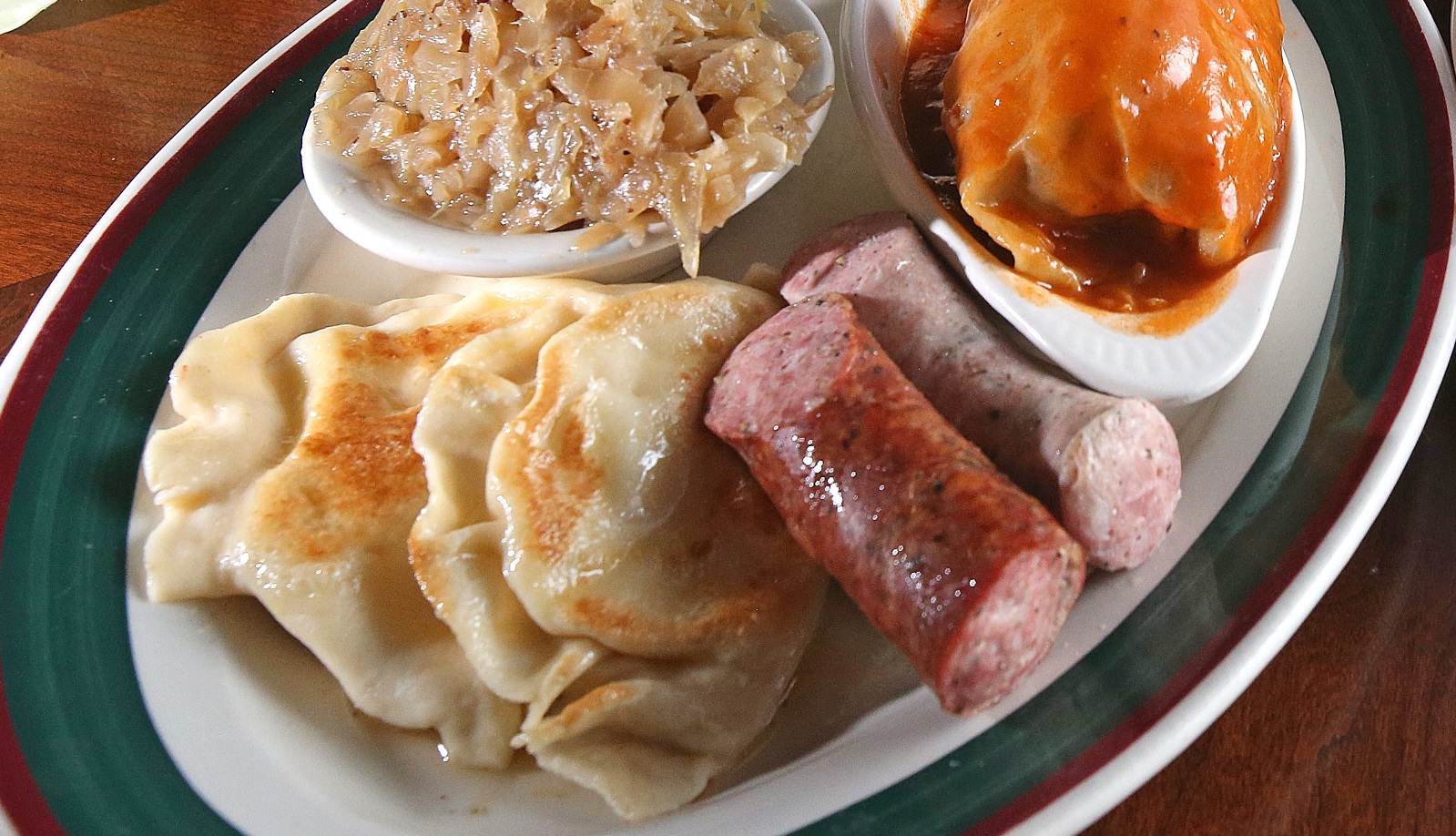Pork and cabbage again? This exclamation is often heard in Polish catering establishments.
We have already written about this ubiquitous Polish dish. What other dishes are there for meat-eating Poles?
Meat in Horseradish Sauce
Meat has always occupied an important place in the history of Polish cuisine, which was well understood by the compilers of old cookbooks. Maria Ochorowicz-Monatow, one of the most widely read culinary authors of the late 19th and early 20th centuries (her ‘Universal Cookery Book’ was published in the late 19th century and translated into English), emphasised that a selected piece of meat was the most common dish, regardless of the family’s wealth. “This dish is loved by all; it is impossible to imagine a real dinner without it. It is often part of the diet of monarchs. Even Emperor Franz Joseph of Austria could not do without a piece of meat to eat. A century earlier, the famous Jan Schittler (head chef at the court of the last Polish king, Stanisław August Poniatowski, and author of numerous cookbooks) shared this opinion: “The main course at every table is soup and a piece of meat”. It should be noted that, at that time, a ‘piece of meat’ was a piece of meat cooked (stewed) in a meat broth (not only beef), to which various garnishes and sauces were added. Today this dish is still popular: beef boiled in broth and served with horseradish sauce. You can try it in restaurants offering a traditional Polish menu. If it is prepared correctly and with high quality ingredients, don’t hesitate to try this dish – it is delicious!
Veal Paprikasz
Veal paprikasz came to Polish cuisine from Hungary. It appeared in Polish cookbooks in the 19th century. The roast veal cubes were served with garlic, paprika (preferably real Hungarian) and hot sauce. Experts believe that it is the sauce that distinguishes paprikash from goulash. Maria Dislow, author of the popular cookery column ‘How to Cook’, advises adding meatballs to paprikash, but it is usually served with potatoes. Pickles are definitely served with the paprikash. In restaurants specialising in traditional Polish cuisine, a skilfully prepared paprikash can be an unforgettable taste experience.
Breast of Veal Zrazy
It is impossible to imagine Polish cuisine without zrazy (stuffed meat biscuits), which Polish housewives prepare in two ways. Stuffed meat zrazy (zrazy zawijane) are pieces of meat (usually beef) wrapped in a filling. There are also zrazy in the form of meat rolls stewed in onion or mushroom sauce. Legend has it that King Wladyslaw Jagiello loved this dish from Lithuanian cuisine. Despite their origins, rolls were mainly associated with the cuisine of the nobility. At least a dozen variations of this dish can be found in every 19th century cookbook. Today, zrazy is served with a side of buckwheat or barley porridge. Given its history, it is not surprising that such a culturally important dish appears in the pages of Adam Mickiewicz’s Polish national epic Pan Tadeusz.
Interestingly, zrazy was sometimes served with breakfast, especially in the morning before the hunt.
Today, there are countless types of zrazy. You can find them on the menus of traditional Polish restaurants. Zrazy with bacon, gherkins, onions, mustard and mushrooms is worth trying. Rulé of old Polish pork tenderloin with wild mushrooms and sour cream.
Pork Goulash
Polish pork goulash has almost nothing in common with the Hungarian national dish. The Polish dish by this name dates back to the culinary tradition of the second half of the 20th century, although a goulash recipe close to the Hungarian one can be found in old Polish cookbooks. Today, pork goulash has become a synonym for cheap home cooking: it is often served in buffets or inexpensive canteens. It is cooked from an inexpensive pork carcass, cut into pieces and stewed in a sauce with typical Polish spices, i.e. chilli. Goulash is served with potatoes; it is sometimes used as a filling for potato pancakes.
Pork Knuckle
No cheap restaurant, whether it’s a roadside café or a city bar, is without golonka (pork knuckle). The knuckle – the part of the pork shank with the bone attached to the shank or forearm – is usually served with horseradish or mustard, and garnished with cabbage or peas. In Poland, this dish is so popular that there are even special cooking festivals where chefs experiment with this dish. Originally not characteristic of Polish cuisine, it was borrowed from the Germans at first in Greater Poland, which after the partitions was under Prussian rule for over a hundred years. Since then, knuckle meat has become so deeply rooted in Polish cuisine that it seems to have always been there. Moreover, the Minister of Agriculture included knuckle of pork in the list of traditional Polish dishes, not only Wielkopolski, but also Pomorski, Bezkidzki and Sądecki.
Duck With Apples and Marjoram
Baked duck with apples and marjoram is a regular dish on the Polish festive table. It can easily be found on the menus of restaurants serving Polish specialities. According to the recipe, which was valid until the end of the 19th century, this dish is made by rubbing the inside and outside of the duck with a mixture of salt and marjoram (some people add garlic), then stuffing it with apples and baking it in the oven. The garnish depends on the region: in Wielkopolska it is usually potato dumplings or red cabbage.
The dish is so widespread that the duck has become the heroine of one of the most popular Polish children’s poems by Jan Brzehwa: ‘The Odd Duck’.
You may also like:



